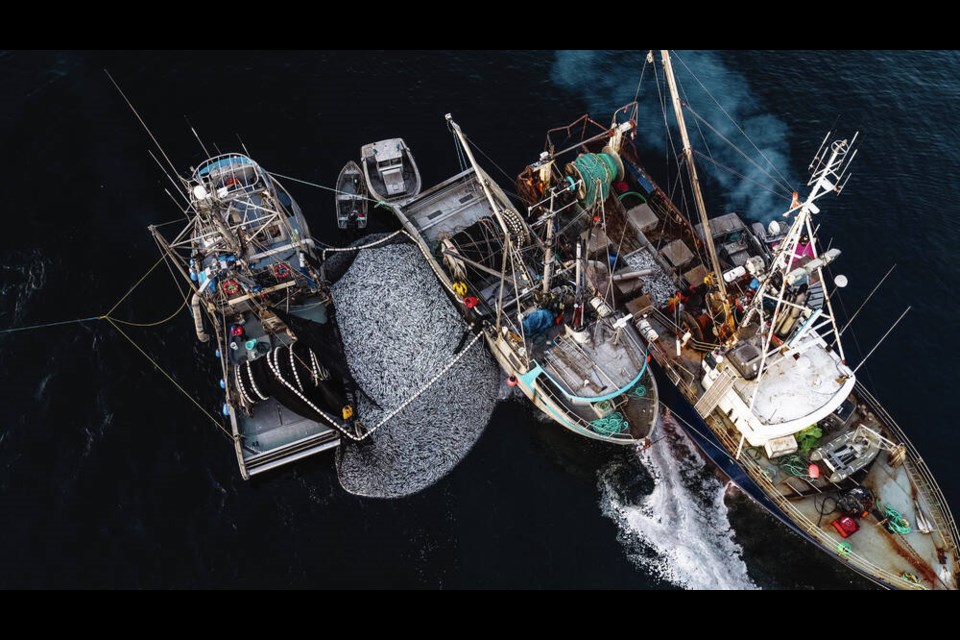The Saanich Inlet Protection Society is the latest organization to call for a moratorium on the herring fishery in the Strait of Georgia.
The group is asking the Department of Fisheries and Oceans to hit the pause button in its submission on the proposed Integrated Fisheries Management Plan for herring that will be finalized in the coming weeks.
Michael Simmons, vice-president of the society, said DFO is in the last stages of putting its plans together for the coming year and the society wants the allowable catch to be zero. It’s also asking for a recovery plan for some areas of the strait.
“The recovery plan would mean, first of all, that you don’t fish. Secondly, look at habitat improvement and whether there are things that could be done to encourage the fish to come back.”
Simmons said the society studied the data available for the herring fishery and determined there is now almost no herring spawn in southern areas of the strait, while the catch in northern regions is dropping.
He said DFO is not going far enough with its restrictions on the herring catch, doesn’t respond quickly enough and is not taking its own advice.
“Precautionary means that if you’re not certain what’s going to happen, you’re on the side of being super cautious in terms of preserving a species,” he said.
Several other conservation groups have called on the federal government to close the herring fishery in the Strait of Georgia in recent years, citing steep declines in the population.
Sydney Dixon, marine specialist with Victoria-based conservation group Pacific Wild, said the organization has been asking for a moratorium until herring stocks have had time to recover.
“Historically, herring were abundant on the B.C. coast, supporting nearly the entire coastal ecosystem and First Nations communities. Today, herring no longer spawn in many of their former spawning grounds along the coast and major herring populations in B.C. are failing to thrive,” she said. “Herring is a sacred resource too precious to risk losing.”
Dixon said Pacific Wild is still working its way through DFO’s Integrated Fisheries Management Plan for the herring fishery in order to prepare its response.
Herring populations fluctuate year to year depending on conditions and predator populations. They are vital in the food chain as they provide food for salmon, birds, groundfish, humpback whales and indirectly the orcas that feed on salmon.
In a statement, the Department of Fisheries and Oceans said conservation is its first priority in management of the herring fishery.
“DFO is committed to managing Pacific herring fisheries to ensure that there are enough herring to spawn and sustain the stock into the future and support its role in the ecosystem,” said spokeswoman Jennifer Young.
According to the department, spawning biomass — the combined weight of individual fish capable of reproducing — within the Strait of Georgia has averaged around 75,000 tonnes annually since 2011 and has been relatively stable and in the “healthy zone” in that time. The projected spawning biomass for 2024 is expected to be healthy again.
DFO said it will take all input it receives on its Integrated Fisheries Management Plan for Pacific herring into consideration in the development of the final plan, which will outline scientific assessments and forecasts, harvest levels, areas open for fisheries, management measures, gear allocation, and fishery monitoring requirements.




